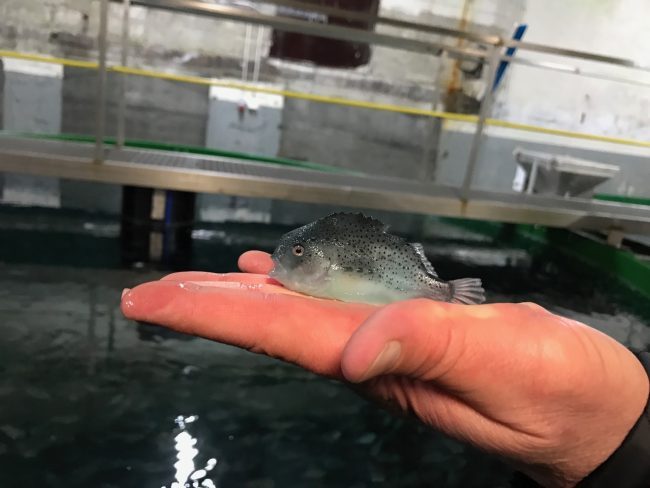With the Scottish government still seeing a need this week for clear forecasts on the greater numbers of farmed cleaner fish needed to combat sea lice in fish-farming, there’s a tale about money-making from Norway that might encourage the little fish’s cultivation.
For those growing wrasse or lumpsuckers, the story of Tomma Rensefisk might inspire. The lumpsucker venture in Norway’s Nordland County made a profit for the first time in 2017 after posting zero earnings in its first two years.
“Our first sale gave us a surplus in 2017 of three million kroner (EUR 300,000) in our first year of (commercial) operations,” manager Runar Fjellgaard told newspaper Rana Blad.
“It’s great getting onto the plus-side as a start-up,” he was quoted as saying.
The cleaner fish company does have deep-pocketed shareholders, however, and at least two of these are its customers. Still, it’s the kind of business and pattern of ownership Scotland might need more of, if it hopes to raise its farmed output of species widely reported to be under pressure as fisheries.
Wrasse supplies
As recently as yesterday, the Scottish Government’s Environment Committee found it necessary to correct its production figures for cleaner fish, noting Marine Harvest was being underreported by Marine Scotland and had, in fact, produced 800,000 lumpsuckers in 2016, not 262,000 as was reported. SalmonBusiness has reported more recent Marine Harvest cleaner-fish endeavours that are sure to ramp-up supply in Scotland, although there’s evidence lumpsucker and wrasse are being used interchangeably.
“Information from the (Scottish) industry suggests that by 2019 it would like to be able to cultivate all the wrasse that it uses, but it is not clear whether that is an achievable target. If it is not achievable, clearly the demand for wild wrasse will continue,” the Committee report said.
Scottish salmon farmers are heavy buyers of lice-eating species. Officially, 1.7 millino lump-suckers and 1 million wrasse were bought by the Scottish industry in 2016.
Lumpsucker harvests
Norwegian numbers are sure to be higher. The Scandinavian country has had a historical head-start as a well-capitalised segment, with the use of wrasse dating back to the 1980’s.
Tomma Resnefisk, meanwhile, delivered its first harvest of 200,000 wrasse to its shareholder-clients, Tomma Laks and Nova Sea, owners of 60 percent of the company. They plan to scale up production to 1.5 million fish in 2018.
Clouding the cleaner-fish issue in the UK is a “largely unregulated” wrasse fishery and fears the fish infect and are infected by farmed salmon.

